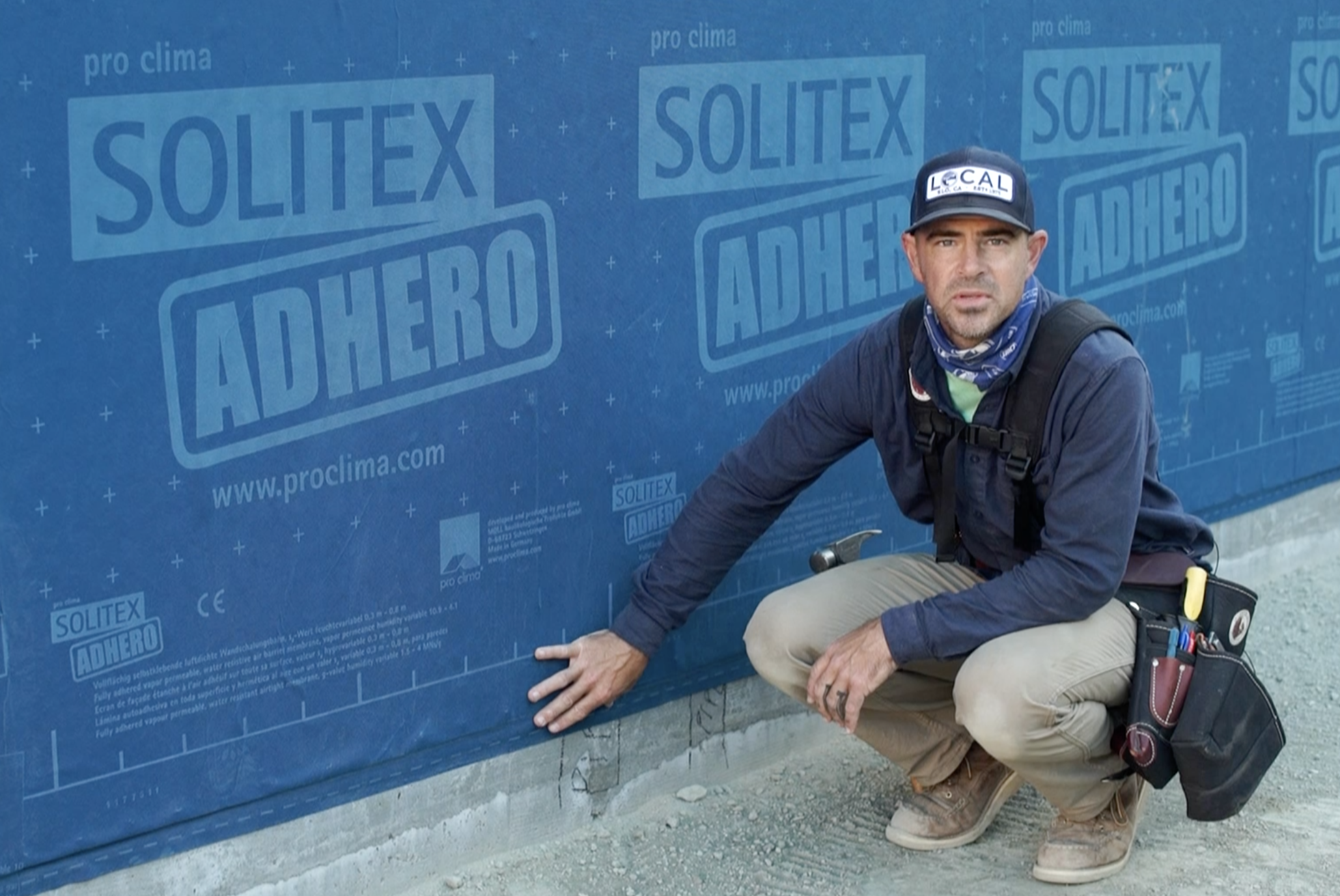(This is the seventh in our series of reflections on real construction decisions for one of our local projects: The Bishop Passive House)
Do you know where your indoor air comes from?
In typical construction on the Central Coast, our building envelopes are rather leaky. Leaks around windows, sill plates, roof and ceiling penetrations, you name it. This is great if you think having a building “breathe” is important for fresh indoor air. But, when that “fresh” air is coming from your crawl space, from a stud bay, or perhaps your attic, it starts feeling less fresh fast.
Better indoor air quality – and energy efficiency too – can be achieved with an air tight building envelope. In this video, builder Mike Horgan explains what makes a weather resistant barrier “probably the most important step you can take.” It provides air-tightness and continuous drainage (think mold prevention) from the foundation all the way to the roof assembly.



